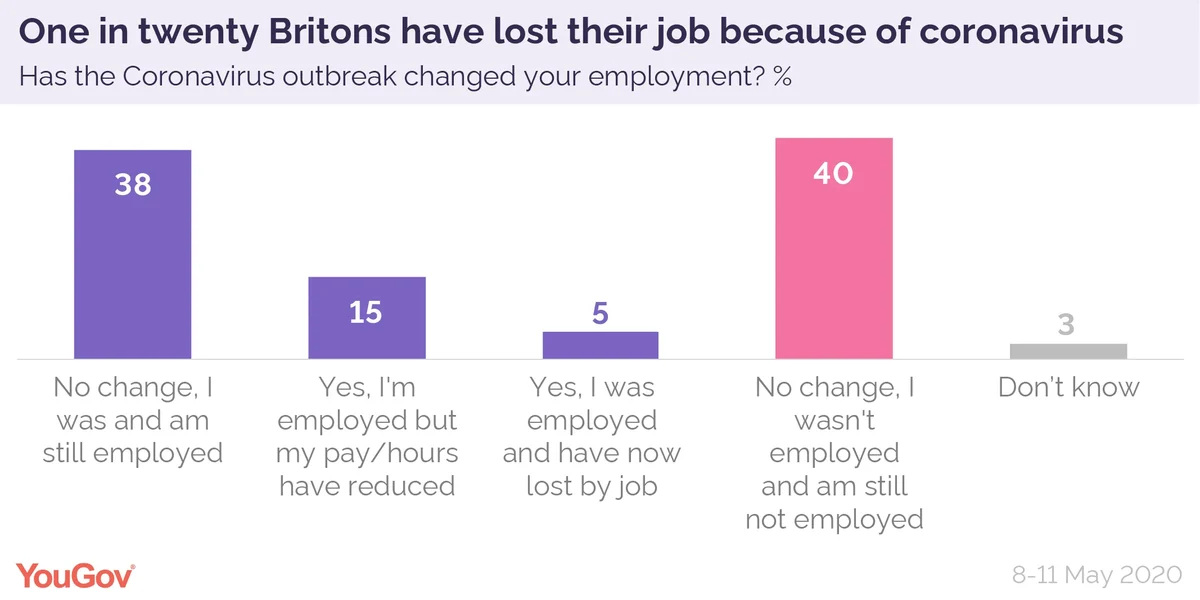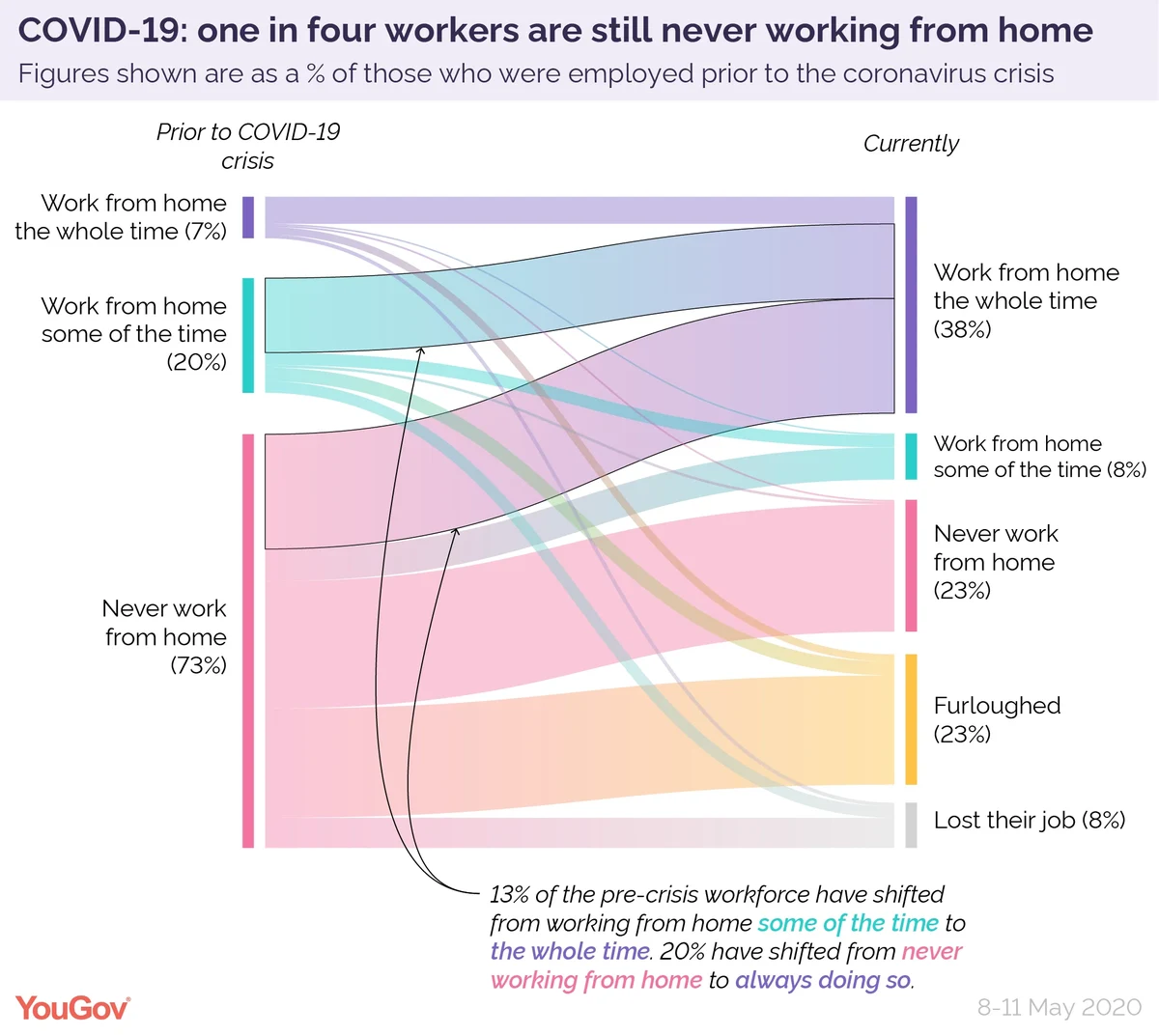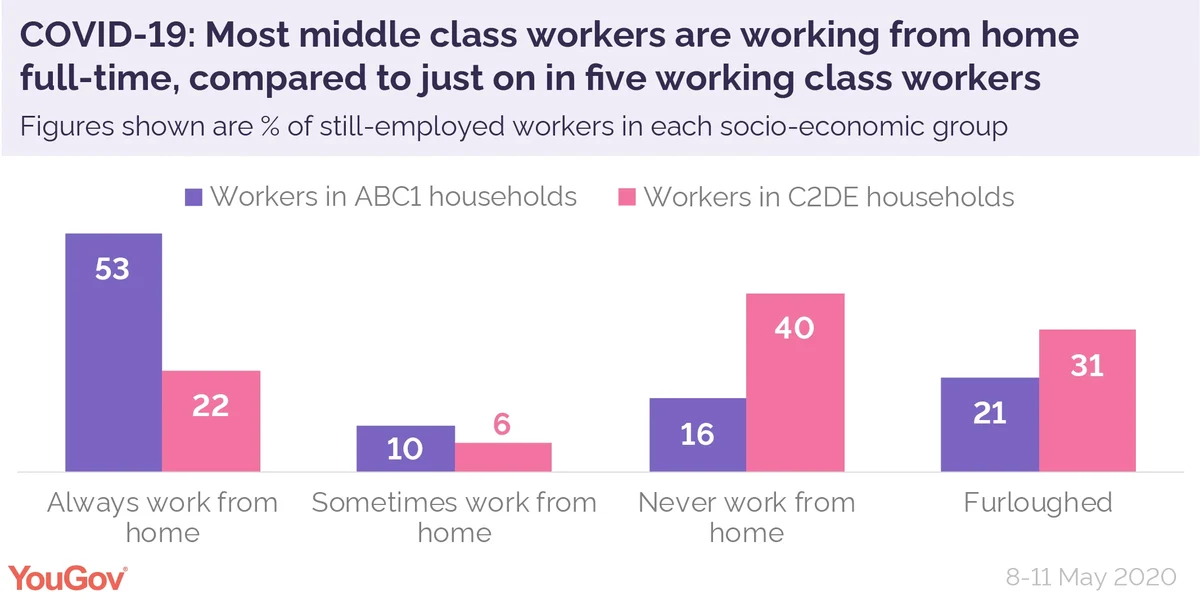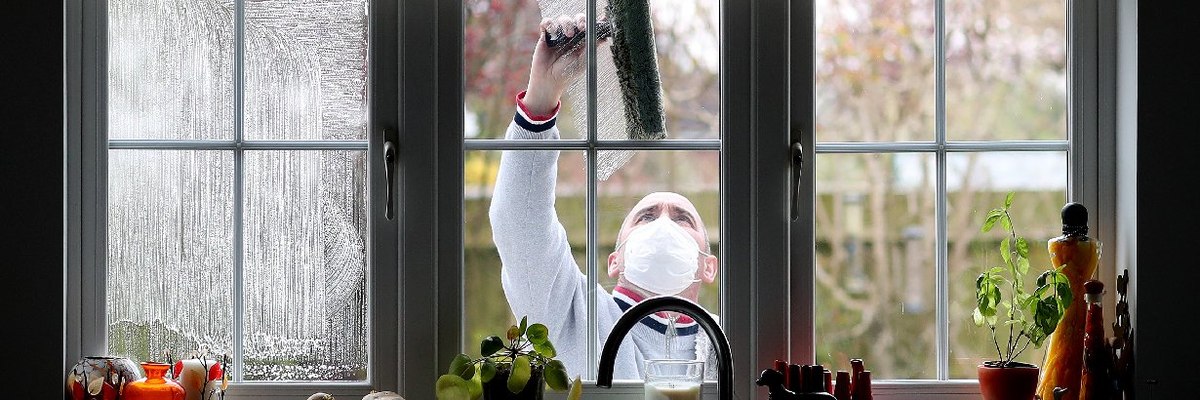Around a quarter of British workers are still unable to work from home at all
Since the UK went into lockdown YouGov has been tracking the impact of the coronavirus crisis on the public. Today we are looking at how Britons’ work lives have been affected. The data was collected from 8-11 May: future research will examine the impact of the loosened lockdown which comes into effect on 13 May on the workforce.
One in twenty Britons (5%) report having lost their job – this is equivalent to about 8% of the workforce. A further 15% of Brits say they have had their pay or hours reduced – the vast majority of these will be furloughed: a separate question found 14% saying they were on the government scheme.

Perhaps the most obvious consequence of the coronavirus outbreak has been the closure of most of the nation’s workplaces, with much of the population now working from home as best they can.
Prior to the crisis, only 7% of workers say they worked from home the whole time, with an additional 20% saying they did so on occasion.
Now more than four in ten of the pre-crisis workforce are exclusively working from home (38%), with another 8% now doing so some of the time.
Nevertheless, almost a quarter of pre-crisis workers (23%) say they are not working from home at all. A further 23% have found themselves furloughed for the time being.

Overall about one in five of those with jobs before the coronavirus outbreak (20%) have made the leap from never working from home to doing so constantly. Another 13% have moved from working from home some times to all the time.
About half of workers’ routines seem unaffected: 5% worked from home before and still do, 2% did so sometimes and still do, and 22% never did and still don’t.
Most of those workers who lost their jobs come from occupations that never saw them working from home before the virus struck.
The coronavirus class divide
There have been complaints from some quarters that the terms of the lockdown protect the middle class, whose jobs are more easily done from home, while forcing the working class to risk exposure by continuing to go to their workplaces.
The data backs this up. Among workers in ABC1 households, 53% say they are now working from home full time. This figure is just 22% in C2DE households.
By contrast, four in ten workers from C2DE homes (40%) say they aren’t working from home at all, compared to only 16% of ABC1 workers who say the same.

Although C2DE workers are more likely to have been furloughed than ABC1 workers (31% vs 21%), if you combine the totals of furloughed workers with those always working from home - to calculate the proportion of people who are able to always stay indoors should they desire - then the class gap still persists. While almost three quarters of ABC1 workers are able to stay inside under this measure (74%), that figure is only 53% for C2DE workers.
With government advice now being to encourage those unable to work from home back to work, we may see these figures start to change in the coming days.
Note: This article originally did not separate furloughed workers from the rest of the workforce. It has since been amended to show them as a distinct group.







